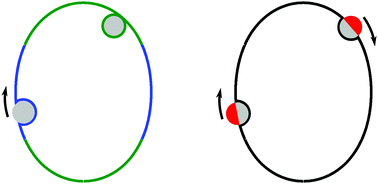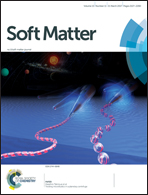Uniform and Janus-like nanoparticles in contact with vesicles: energy landscapes and curvature-induced forces
Abstract
Biological membranes and lipid vesicles often display complex shapes with non-uniform membrane curvature. When adhesive nanoparticles with chemically uniform surfaces come into contact with such membranes, they exhibit four different engulfment regimes as recently shown by a systematic stability analysis. Depending on the local curvature of the membrane, the particles either remain free, become partially or completely engulfed by the membrane, or display bistability between free and completely engulfed states. Here, we go beyond stability analysis and develop an analytical theory to leading order in the ratio of particle-to-vesicle size. This theory allows us to determine the local and global energy landscapes of uniform nanoparticles that are attracted towards membranes and vesicles. While the local energy landscape depends only on the local curvature of the vesicle membrane and not on the overall membrane shape, the global energy landscape describes the variation of the equilibrium state of the particle as it probes different points along the membrane surface. In particular, we find that the binding energy of a partially engulfed particle depends on the ‘unperturbed’ local curvature of the membrane in the absence of the particle. This curvature dependence leads to local forces that pull the partially engulfed particles towards membrane segments with lower and higher mean curvature if the particles originate from the exterior and interior solution, respectively, corresponding to endo- and exocytosis. Thus, for partial engulfment, endocytic particles undergo biased diffusion towards the membrane segments with the lowest membrane curvature, whereas exocytic particles move towards segments with the highest curvature. The curvature-induced forces are also effective for Janus particles with one adhesive and one non-adhesive surface domain. In fact, Janus particles with a strongly adhesive surface domain are always partially engulfed which implies that they provide convenient probes for experimental studies of the curvature-induced forces that arise for complex-shaped membranes.



 Please wait while we load your content...
Please wait while we load your content...